Category 4
Category 3
Category 2
Category 1
We specialize in elevating content creators like you through bespoke social media strategies that not only capture attention, but also drive engagement.
Stride Social
Welcome to
“How many families don’t have someone sick in them? We all have somebody in our family that is fighting obesity, high blood pressure, cancer, something,” said Kurt Unkle, Owner of Cajun Grain in Kinder, Louisiana.
A report released by the National Council and Institute of Medicine support Kurt’s observations. The study reports we, defined as male and female Americans, live shorter lives than other wealthy nations. In fact, we rank 16th on the list. And during our shorter lives we suffer from more diseases.
The cause for our collective sickness are attributed to many factors. They include the rise of a sedentary lifestyle as we spend more time in front of screens versus hunting and gathering, processed foods, our love for sugar and salt, etc. But there is another cause for our poor health rarely mentioned. It is the steady drop of vitamins and minerals in the food we eat.
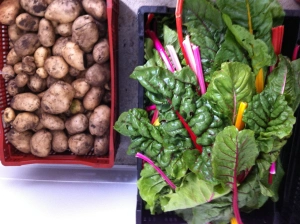
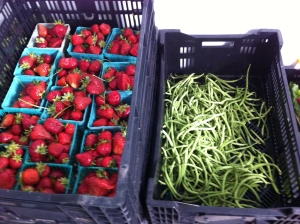
According to the USDA nutritional composition tables, fruits and vegetables have fewer vitamins and minerals than they did in 1975. Broccoli lost 54 percent of its calcium, iron levels are down 60 percent in cauliflower and apples, and bananas have 48 percent less phosphorus on average. With a few exceptions, like carrots and pumpkins, our food is less nutritious than ever before. Even when we stay clear of processed foods, instead opting for the salad of fresh greens and assortment of vegetables, we are eating far fewer vitamins and minerals than the U.S. population did four decades earlier.
Why is food less healthy? The answer is in the soil according to Joe Miazgowicz from Crop Services International. He explains, “Microorganisms bring minerals to the plant. The plant roots then pull the minerals from the soil with its root hairs.” This natural delivery system is dependent on the presence of a thriving community of bacteria and fungi (microorganisms). “In the conventional system,” Joe explained, “The farmer and home gardener puts phosphorus, potassium and nitrogen in a soluble form like Miracle Grow on the soil. The salts from the fertilizer dry up the bacteria and fungi killing off the natural delivery system.”
With the absence of microbes in the soil, the plant is dependent on fertilizers to feed it the nutrients required for its growth. One can argue that this method works to increase yields, but as Kurt pointed out to me, “It’s cost us. We lost our soil, and we lost our health.”
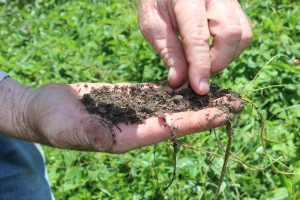
There are several billion microbes in one handful of healthy soil
Kurt showed me the soil test results from Miazgowicz company Crop Services International (CSI). “You start getting the ratios right in the soil, thecalcium ratios, phosphorus ratios right, then the plant gets it right. When you eat it, you get it right. For us to be healthy the plants need to be healthy.” CSI tests for soil ratios rather than the traditional soil test that identifies only the elements available to the plant. A ratios test looks at the amount of nutrients available to the plant and the nutrients present in the soil. The goal is for the plant to thrive without fertilizers by recruiting the army of bacteria and fungi to bring minerals to the plant.
“Keep putting only nitrogen, phosphorus and potassium on the ground year after year it throws your ratios out of balance. When your ratios get out of balance you get more weeds, you got to put more chemicals, and the chemicals kill the bacteria. It is a chain reaction,” Kurt told me.
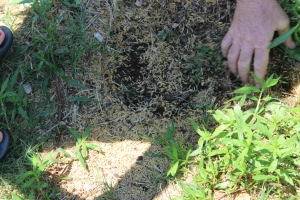
Kurt shows off his healthy soil at Cajun Grain farms
We need more water to grow crops in the system Kurt described. A report published by Soil Science found soil alive with microorganisms, also referred to as humus, holds water at 80 to 90 percent of its weight. Soil without humus is thirstier and fosters runoff of nutrients into waterways, which causes another chain reaction: unhealthy rivers, groundwater, and oceans. Like Kurt said to me, “Everything feeds off everything.”
The good news is there are farmers who are cultivating the microbes in the soil and producing more nutritious foods. Over the past few years, I’ve had the privilege to meet with farmers around the country who are curators of the soil and water like Kurt. But if these farmers are to thrive like the army of bacteria and fungi in the soil, these farmers need our support by seeking them and purchasing their food.
Eat less water at the kitchen table. There is power in the collective.
Be well,
Florencia
Leave a Reply Cancel reply
Ready to take Action?
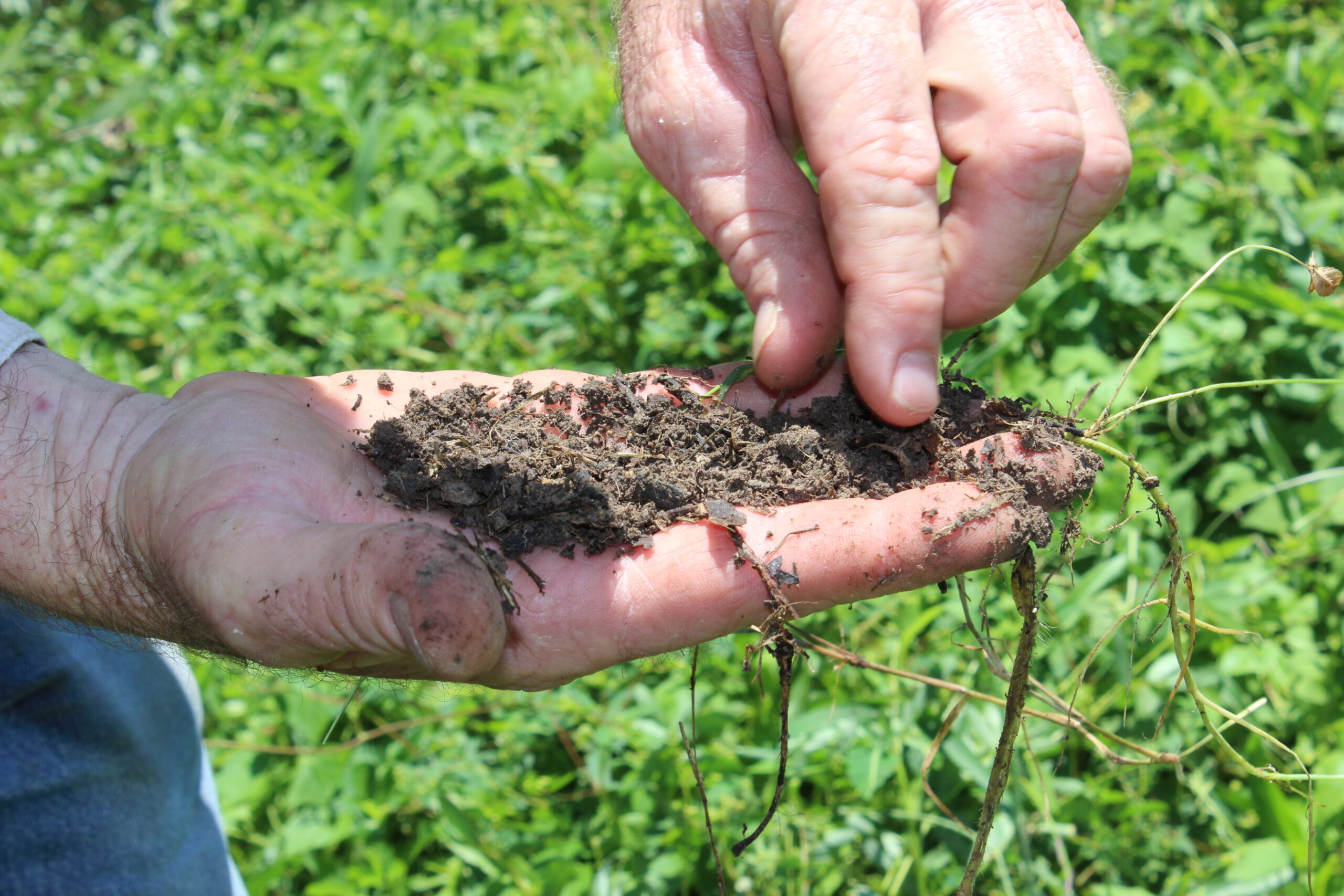
click to Read & Leave a comment
Click to close comments
Comments